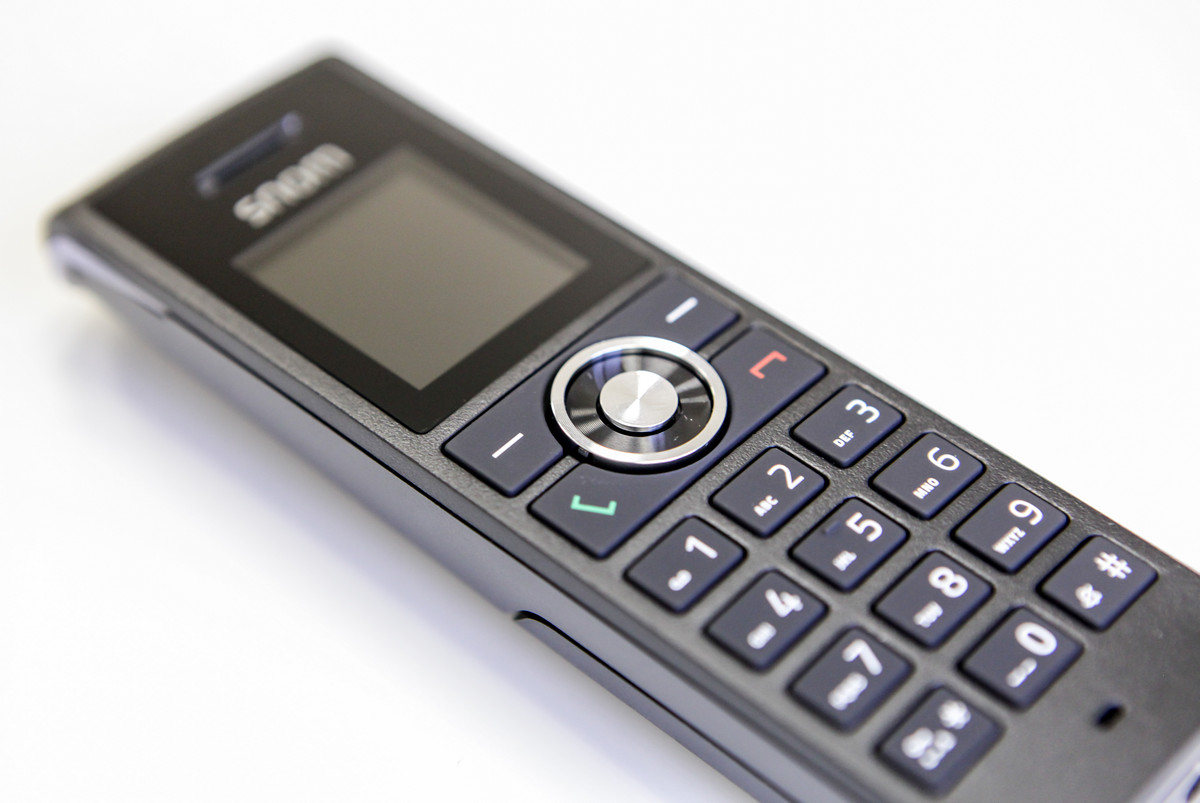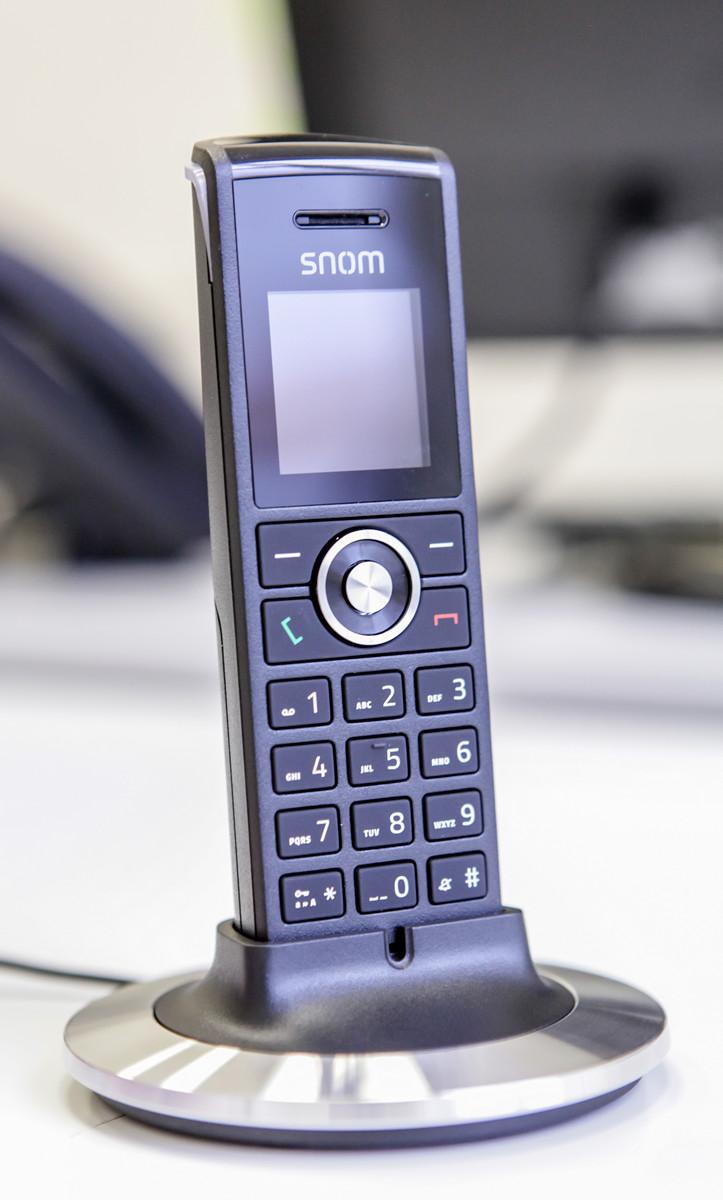Seamless DECT-network do it yourself

There are many ways to organize telephone communications in the office of a company, and the choice of a specific technical implementation depends on many factors. If the building is initially laid telephone communications, it is a sin not to use them. You can still build a telephone network based on computer. But when employees need mobility and they do not sit in one place, and instead of desktops with landlines, they prefer laptops and cell phones, there is reason to think about creating a wireless telephone service in the office.
Somehow one of the customers suggested that we deploy a seamless DECT network in his building so that employees could always be in touch, constantly moving between offices and departments. “Easy!” We answered, and thought; we haven't done this before. They decided to cut the network on Snom equipment . They started according to the classics: they turned to His Majesty the Collective Mind, that is, they began to google. Information was gathered from the world on a string, and perhaps our experience will help you save a lot of time and nerves if you decide to deploy a DECT network on your own.
Building characteristics
The building in which we were asked to deploy a telephone network was a classic “stalk”: good from the point of view of residents, but a complete nightmare for a communications engineer. The house is built in the shape of the letter "P" with a wide "crossbar" and short "wings", and the total length of the floor is more than 100 meters. Monumental five-story building, with a ceiling height of not less than 4 meters. Anyone who did not reach under two meters, to get to the ceiling, it was necessary not only to climb onto the ladder, but also to jump.

If you open the ceiling, then above it there is still a meter and a half space in height, there, probably, with a great desire you can live. Brick walls are so thick that the building will survive during a nuclear war, and there used to be a bank vault in the basement. This hell to build a wireless network from the point of view of the installer.


Networking
When we began to try, as the signal “punches” the house’s structures, we first placed the tethered phone in the basement, at the bottom of the left “leg” of the letter “P”, then went with the base station to the farthest right end of the “crossbar” and began to approach the tube. The signal was caught approximately where the “leg” is connected to the “crossbar”. At this place, we put the first base station and began to measure the passage of the signal on the floors.

In an ordinary office building, the signal from the station is caught not less than thirty meters horizontally and at least three to four floors vertically. In the Stalinist monster, the signal was completely lost already at twenty-five meters, and in height only a couple of floors held: powerful reinforced concrete floors of “Stalin” of half a meter thickness and tall ceilings made their corrections. They found out empirically that the signal of the base station standing in the corner of the building covers one “leg” and almost half of the “jumper” of the letter “P”.

Then we began to build a microcellular network. It differs from a single-cell network in which only one station and all the tubes are tied directly to it, in order to cover a large volume of base stations. and telephone sets are dynamically connected to the one whose signal is more powerful.
First you need to designate one station as “Primary”, set a unique pin-code on it and configure a range of static IP addresses. When another base is installed within reach of the signal, a pin is entered in its web interface, it automatically clings to the first one as a “Slave”, and the network is automatically scaled. The second station was placed in another corner of the building. The next base was set on the third floor, in the middle, and she beat her right up to the fifth. Further - the matter of technology: to put another station or a repeater on the border of the reception of previous stations and link them to the network. It turned out that in order to fully cover our building, we will need 4 bases per floor, and the bases are placed across the floor. In total, the network can be up to 253 stations Snom M700, which will serve up to 1000 handsets. Up to three Snom M5 repeaters can be connected to each M700.
Illustration of the overlap of reception areas of base stations:
When you first connect the handset to the station, it becomes “home” for the device. But the phone can change the “home station” in the process of roaming, if it turns off from the network or it stays connected to another base for more than five minutes.

Web interface settings of the base station:
The M700 base station's multi-cell mode is enabled and configured here: The

page for connecting handsets and other bases to the main station (setting up SIP accounts):

Network settings of the base:

And this is the essence of the microcellular network - connecting a repeater or another station for network extensions:


In order for the BS to more reliably determine the network, it is recommended to set a permanent IP address. The default login and password of the web interface does not shine with originality: admin / admin. We recommend to change them immediately.
For testing, we used two phones: the simplest M25 and the clever M85made of impact resistant plastic that can call for help if a person falls. (You fly to the mine, the phone calls the emergency number, and you are advised what to grab in the flight.)

Snom m25

Snom m85
Usually, for a radio survey of a building, you need to carry a special measuring kit with you, but we did without such equipment, because in Snom phones, besides primitive “sticks”, you can see the received signal power in decibels and the number of errors when exchanging information with the next five stations or repeaters. It helps a lot to figure out the maximum receiving distance. The fact is that the quality of communication will be high even at the maximum range (the same DECT), and to assess the boundaries of the reception can not rely on interference in the conversation. In addition, the codec has a write cache for a few seconds, which is turned on if the person with the phone goes beyond the limits of signal propagation. As soon as it returns to the coverage area, the buffer is flushed to the network. Warning that the handset has come off the station, is issued only when a person leaves the reception area long enough. And if he leaves the radius of one base and has time to quickly get to another, he does not even know about it, the conversation will continue, as if nothing had happened - this is called a handover. So without an accurate display of the signal power directly in the phone, it would be much more difficult to build networks. True, these data are hidden quite deeply and unobviously, it is not easy to get to the bottom of them, but there is a shortcut command: * 47 *.
It is also worth noting that in order to build a network, you need to buy in advance and configure a PoE switch that will power base stations and repeaters through a twisted pair. On the one hand, these are additional costs, on the other hand, a significant simplification of the entire network installation: it’s enough to stretch the network cable alone, and you can not bother looking for sockets for powering the bases, with power supply units, and hiding the wires in the cable boxes0. The PoE switch is simply rack-mounted where it suits you and connects to the equipment. In addition, many office buildings already have such switches, so check this point out. You also need to understand that the DECT-based network is only the “last mile” of office telephony, its organization requires a configured IP-ATC station, which is the heart of the entire system, telephones tied to a base station, regular SIP accounts, differing from fixed phones only in the way they communicate with IP-ATC. Snom equipment is not based on proprietary closed protocols and is compatible with all common types of PBXs, such as Asterisk, 3CX, Broadsoft, and the like, running on the open SIP protocol.
The density of base stations depends not only on the volume of the building, when planning a wireless network, you also need to consider how many people will be on the phone at the same time. It is clear that salespeople will constantly hang on the pipe while sitting at their workplace, occasionally moving to a coffee point and back; Accountants will not leave the office until the end of the working day, but they will call only occasionally; and enikeyschik of technical support will be worn throughout the office and his phone will be torn from the requirements of “Immediately change the paper in the printer” or “I didn’t touch anything, it’s myself!”. Everyone needs different tubes, depending on the nature of the work. It is better for the technical support specialist to give out the strongest one, which will not fall apart if it slips out of your pocket when it hangs vampirely upside down in the false-ceiling space.
In general, 8 stations were enough for our building to provide full seamless coverage of the telephone network. Running through the floors, we didn’t hear the “quacking” from the phones, when they were losing the signal, and the conversation was never interrupted. And this is a very good result, considering how many conditions must be met when placing base stations, because their mutual overlap should ensure reliable handover of subscribers. To do this, each station must be contacted with at least two more, and it is better to see three stations at the same time by phone, so that when approaching the base, in which all the channels are hammered by restless managers, you can use the channels of another BS. You should also try to keep the chain as short as possible between any two bases, otherwise a person talking in the building may take too many channels.
We found information on setting up stations and phones on wiki.snom , there is a lot of information there, but so far only in English. There were quite a few gags, while reading the manuals, and they were written quite dryly, and the web interface is not intuitive everywhere, you need to read several articles at once to keep all the information on setting up databases and phones in your head. Nevertheless, this resource is enough to solve all the issues that arise.
